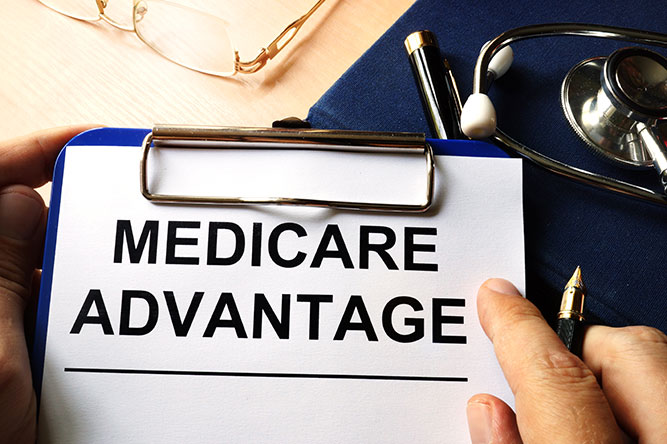
The recent sharp decline in new COVID-19 cases and mortality for long-term care and senior living providers has been very encouraging and appears to owe much to the effectiveness of the vaccines and ongoing hard work by providers. As we move into the next phase of the pandemic, attention by policymakers and the public will inevitably shift to reforms necessary to help ensure a better future for our most vulnerable members of society. The stakes are high: the American Health Care Association projects that 1,670 nursing facilities will either close or merge in 2021 without further government intervention. Senior living census is at an all-time low. Given limited funds available, priorities will need to be established and a broad range of stakeholders will be weighing in.
At HDG, we understand that to find the right solution, you need to understand the problem. In the case of COVID-19 transmission and outbreaks within long-term care, the sources of the problem are complex and driven by multiple factors.
Understanding Drivers of COVID-19 Outbreaks
There have been several studies of COVID-19 outbreaks in long-term care over the last few months. One of the more thorough and rigorous studies was written by University of Chicago researchers Gorges and Konetzka and published in the Journal of American Geriatrics Society in summer 2020. The researchers were specifically looking at the impact of staffing on the odds of having a case in a nursing home, and then, if the facility had cases, the factors influencing the size of the outbreak.
What they ended up finding was a more nuanced and less significant impact of staffing levels on outbreaks than they expected. Instead, by far, the number one driver of the probability and size of an outbreak in a nursing home was the level of outbreak in the surrounding community. This finding was echoed by other studies and was the conceptual underpinning for the distribution of $2 billion in performance-based funding through the Nursing Home Quality Incentive Program, a central tenet of which was to keep the rate of infection in the facility below county averages.
Another significant, but less noticed, finding of the research: facility size plays an important role in outbreaks. HDG concurs and would go a step further and state that the number of semi-private versus private rooms and presence/absence of a memory care unit are also likely to be significant drivers of COVID-19 outbreaks—variables that were not examined in the study.
Implications for Public Policy
Medicaid funds about two-thirds of the care in nursing homes. For many years, across many states, Medicaid rates have been ratcheted down below the actual cost of care, implicitly forcing facilities to be large and to have double occupied rooms in order to spread out fixed costs. Further, Medicaid capital reimbursement policies can discourage investment in physical plant and in some cases, actually reduce payment if occupancy is less than pre-set thresholds (e.g., 90 percent).
These policies need to be re-examined with an eye towards promoting investment in physical plant and most of all, making it financially feasible to have smaller, more intimate facilities with single rooms, isolation capacity, and modernized HVAC systems. This will be challenging in certain markets with limited real estate and options for development. An unfortunate reality makes tackling this question more feasible: nationally, Medicaid spending on nursing homes is way down because occupancy is over 10 points below pre-COVID levels. Those savings should be reinvested in infrastructure and staffing.
Medicare has already figured some of this out in the Patient Driven Payment Model (PDPM). Medicare Part A payments are higher if the patient is on isolation in a private room with an active infection. Even that policy should be re-examined to make sure it is sufficiently responsive to outbreak scenarios where a person’s infection status is not yet known with certainty, but at least it is a start.
Regarding the Nursing Home Quality Incentive Program, this large-scale value-based payment program should be independently evaluated by researchers, including examining the impact of facility size and double occupancy on whether providers received funds.
A more general comment we would make about performance-based funding programs is that providers need to understand how the payment model works in advance of implementation. Unfortunately, the Centers for Medicare & Medicaid Services (CMS) was clarifying important details about the Quality Incentive Program (QIP) several months after it was underway. Our experience with value-based payments teaches us that it is very hard for providers to properly react to performance-based incentives if they are not clearly specified in advance.
From Public Policy to Real World
At HDG, we have been assisting clients to assess where they are today and where they will need to go in the future to survive and thrive. As with larger public policy efforts, this will involve learning from the past and realistically planning for the future. This should include revenue maximization, expense management, rightsizing, service line diversification, leveraging new relationships, and moving to value-based care. For instance, we are helping facilities truly understand their fixed and variable costs so that rightsizing decisions can be implemented successfully.
Our consulting experience is informed by our real-world work as operators. This is a challenging environment, to be sure, but the news from the vaccine front is promising and the need for high-quality care is great. Please contact us at HDG at 763.537.5700 or info@hdgi1.com to learn more about how we can help prepare for a brighter future.












